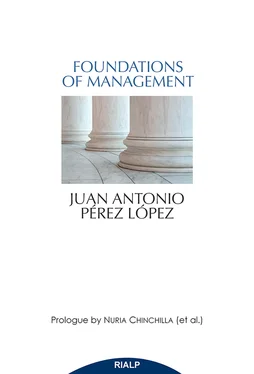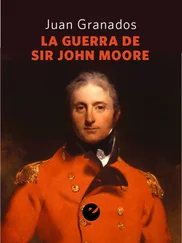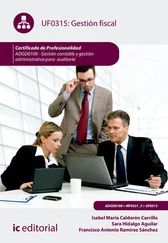For example, a machine is controlled by certain processes, and there are also control processes in an organization. However, the meaning of control in each case is very different, and we would learn little about control in human organizations if we only studied control processes in machines.
We will discuss later the dangers of using mechanical or organic models to represent organizations. First, however, it would be useful to take a closer look at the organizational “image” that each of these models or conceptions proposes, and how well each represents the processes of purpose definition, communication and motivation.
Mechanical or technical system models
In a technical system, the organization is considered to be a simple coordination of human actions whose goal is to produce and distribute a series of objects and/or services. In fact, given that human actions are only organized to produce something outside of themselves (that is, their objective side, ignoring their subjective side or the impact they produce on the subject who performs them), a technical system organizes the interchange of “objects” or “things” (some of these being human actions).
The organization thus appears as a more or less complex machine that produces some things and consumes others. The particular way in which it produces things is determined by the production system, which consists of a set of roles or functions that the system will attempt to specify as accurately as possible (as with parts or components of a machine). The nature of consumption is determined by the incentive system, which one attempts to relate to the production system so that what a person receives corresponds as closely as possible to his productivity: that is, his contribution to the production system's operations.
A technical system does not take into account the personal motives, needs or interactions which are not included in the production system. In fact, any relationship that might exist is established between roles or functions, not between people. A technical system only encompasses the formal organization and ignores—leaves outside of its field of analysis and explanation—all those informal aspects which, in addition to the formal organization, are included within the real organization.
On the basis of this abstraction, technical systems can achieve greater precision in the analysis of all issues having to do with the achievement of maximum production and minimum consumption. Let us not forget, however, that the assumption underlying this analysis is that everything not considered in the model—the entire range of people's non-formalized needs, motives and interactions-is irrelevant in the concrete case to which the results of the analysis are applied.
Every experienced manager has had to face, on many occasions, opposition by some members of his organization when he tries to replace one procedure with another that is “technically” better. The same basic error underlies many of these difficulties, namely, thinking that what appears best in the reduced image offered by the technical system is also best in that complex reality which is the real organization.
The processes of purpose definition, communication and motivation are considerably simplified in a technical system. Purpose definition only seeks to establish operating goals which, depending upon specific circumstances, may be attained by the production system. This process is usually called strategic planning, and it seeks to couple the capacities of the production system with the particular state of the environment prevailing at a given time. The goal is to achieve the most production with the least consumption. The communication process seeks only to convey the necessary information to the various decision centers of the production system, in order to enable the operating goals to be achieved by means of joint action. The motivation process is reduced to the use of an incentive system as a means of distributing incentives: that is, arranging things so that the amount a person receives from the organization increases in accordance with his contribution within the production system (and also so that the amount he receives does not fall below the minimum acceptable to motivate him to contribute at all).
A large portion of business management literature—about the entire management process or certain aspects of it—bases its analysis on a picture of organizational processes which uses the technical system as its underlying model or paradigm. Although lip service is often paid to the need to take into account other aspects of organizations, the core of the discussion is based on an explanation of the processes as reflected in a technical system.
The use of these models as the conceptual basis of a particular author's statements is readily recognizable. One need only look at the ultimate goal assigned, explicitly or implicitly, to the organization. Whenever this goal is reduced to the optimization of the production/consumption ratio (attempting to optimize production at certain levels of consumption, or to minimize the consumption of resources used for a certain level of production, or to maximize the difference between the two), the underlying model is the technical system.
The models, as such, vary considerably, but they all have this feature in common. Their basic differences lie in the various postulates they make regarding the nature of human knowledge, the role of knowledge in decisions, and the way in which decisions are made. The image of the person—the model of man—that they use will range from the one traditionally used in economics (economic man), to the slightly more complete image (since it takes into account—at least in part—the limitations imposed on human knowledge) introduced by Herbert Simon under the name administrative man 1.
Any of these models of the human being is consistent with our model of an organization conceived of as a technical system, since the differences used to establish our classifications are to be found at a deeper level: that of the motives for human action and their relationship to human needs.
Organic models:the organization as an organism
An organic model seeks to explain the coordination of actions for the satisfaction of present motivations, that is, the motivations actually experienced by those who participate in the organization. Of course, an organism includes a technical system (it also organizes an interchange of objects through its formal organization), but also goes beyond it.
The production system and incentive system—that is, the formal organization—is explicitly considered to be but a partial aspect of the entire organization. The informal organization is also taken explicitly (not just residually) into account as an integral part of the model used to represent the organization. Moreover, an attempt is made to represent and account for the interactions between the informal organization and the formal one. The aim is to analyze the influence of the informal system on the behavior of the organization.
An organism's function is not only defined—as with the technical systems—by the achievement of the goals that the formal organization pursues. In the case of organic models, this function also includes preserving people's actual motivations, taking into account the satisfactions they obtain through their interactions within the informal system.
Just as a technical system views the organization as if it were a machine—a coordination of material elements—an organic model views it as a social group—an association of individual persons in a society which they join voluntarily in order to satisfy a series of motives. The sharpest difference between the organism and the technical system lies precisely in the fact that the latter fails to go beyond the level of objects, while the former encompasses the level of subjects and considers their actual motivations for cooperating with the organization.
Читать дальше












